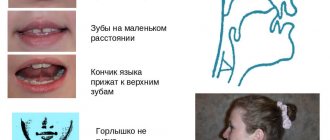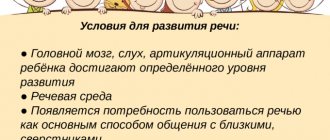Phonetics is a basic section of English linguistics. Language school teachers tell their students about the rules of pronunciation during introductory classes. The reason for this is simple: a significant portion of English words are pronounced differently from how they are written. Combinations of letters can form phonemes that differ significantly from those familiar to native speakers of the Russian language. Knowledge of English phonetics, coupled with practice, will help you communicate with foreigners without the typical accent of Russian speakers.
Phonemes of English
The sound structure of British English includes 44 phonetic units: 24 consonants and 20 vowels. Vowel phonemes include 8 diphthongs - sounds whose pronunciation involves a transition from one vowel to another. The table presents all English phonemes in the form of transcriptions.
| Consonant phonemes | |||
| [f] - five | [d] - do | [v] - very | [k] - key |
| [θ] - thick | [g] - gas | [ð] - this | [tʃ] - chin |
| [s] - so | [dʒ] — Jim | [z] - zoo | [m] - mother |
| [ʃ] - ship | [n] - no | [ʒ] - pleasure | [ŋ] - long |
| [h] - horse | [l] - less | - park | [r] - river |
| — book | [j] - yellow | [t] - tea | [w] - white |
| Vowel phonemes - monophthongs | |||
| [i:] - eat | [ə] - paper | — it | [ʌ] - cup |
| [e] - pen | [ʊ] - cook | [æ] - bad | [u:] - school |
| [a:] - art | [ɜ:] - girl | [ɒ] - box | [ɔ:] - all |
| Vowel phonemes - diphthongs | |||
| [ai] - like | [eə] - air | [aʊ] - house | [ʊə] - poor |
| [ɔi] - boy | [əʊ] - home | [ei] - lake | [iə] - ear |
English sounds are divided into vowels and consonants according to the principle of pronunciation. During the formation of vowel phonemes, active vibrations of the vocal cords occur, and exhaled air passes freely through the speech apparatus. The use of consonant phonemes assumes that the air flow overcomes various obstacles: the tongue, teeth, lips and muscles responsible for sound production. Let's look at the rules for the formation of phonemes that are part of the English language.
Speech therapist for adults
What can cause pronunciation problems in adults?
Quite often this is the result of a habit that has been ingrained since childhood. As a rule, such a habit is accompanied by weakness and slight uncoordination of the organs of articulation: tongue, lips, lower jaw. Various defects in the structure of the speech apparatus are often encountered (they can be identified by a dentist or orthodontist): malocclusion, shortened hyoid ligament (“frenulum”), high palatal vault, etc.
More serious causes of sound disorders are usually identified in childhood.
Can I correct my pronunciation myself?
It is best, of course, to study under the guidance of an experienced speech therapist. A specialist will help you solve the problem as quickly and efficiently as possible. You should also contact a speech therapist if you:
— not one or two, but three or more sounds are disrupted;
— possible disturbances in the structure of the speech apparatus (bad bite, short frenulum, etc., see above);
- at least slight hearing loss;
- neurological problems;
- speech problems appeared after an injury or severe stress.
If the above is not about you, you can try to study on your own. However, remember that if there are no results after two to three weeks of regular self-study, you should still seek help from a speech therapist. You may need some advice before you can continue working on your own. Or it may turn out that your case requires deeper help than it seems at first glance, and only a qualified specialist can provide it.
Where to begin?
From determining which sounds need to be corrected. Sometimes people do not notice the shortcomings of their own pronunciation, and learn about them from the words of other people or by recording their speech on a voice recorder. Hearing yourself speak from an outside perspective is a good way to determine which sounds are impaired. For example, you can use the following words and phrases.
1. Group of whistlers (violated, as a rule, all together) - [s], [z], [ts].
Mow, mow, until the dew dries. At the zoo, Zina saw different animals. At the end of the village there is an acacia tree in bloom.
2. Group of hissing ones (can be violated both together and separately) - [w], [zh], [h], [sch].
Natasha has a new fur coat and hat. The hedgehog has a hedgehog, the grass snake has a snake. Seagulls were screaming at the pier. Wolves prowl, looking for food.
2. Sound [l].
Klava put a white scarf on her head. Lenya's left knee hurts.
3. Sound [r].
Steamers are unloading at the port. Marina will bring walnuts.
4. All sounds.
Galin the black puppy is frolicking near the house. Grandma is drying wet clothes on a line. Eat some more of these soft French rolls and drink some tea.
You can start with any of the disturbed sounds. The main thing is to work on sounds one at a time, and not all at once. That is, only after one has been corrected can you move on to the next one.
The process of working on sound
includes four mandatory stages: - preparatory;
— stage of sound production; — automation stage; — stage of differentiation; as well as one additional stage: - introducing sound into speech. Why it is additional will be discussed below. When going through all these stages, continuity and consistency are very important. You cannot skip over a stage or move on to the next one without mastering the previous one. The result will obviously not please you.
Preparatory stage.
Helps prepare the speech apparatus for the correct pronunciation of sounds. Start by learning the correct articulation of sound, i.e. what position the speech organs occupy and how they move when pronouncing each specific sound. You might get the right sound right away. If not, you will have to do special articulatory gymnastics exercises, but first be sure to read the recommendations for its implementation. The articulatory structure of the most frequently violated sounds, as well as special gymnastics exercises, can be found in the section “These difficult sounds!..”
After the speech organs are sufficiently prepared (the exercises are performed clearly, without errors, at a fairly fast pace), you can proceed to sound production.
Sound production stage.
Sound production can be done in various ways, depending on the articulation of each specific sound. For recommendations on producing a particular sound, see the section “These difficult sounds!..”.
The ultimate goal of this stage is to establish the correct pronunciation of an isolated sound. A sound is considered delivered if you can pronounce it correctly in isolation, i.e. growl: “r-r-r”, hiss “sh-sh-sh”, etc.
Automation.
The delivered sound must be automated, that is, its pronunciation in speech must be brought to automaticity.
Automation begins with the pronunciation of syllables - direct (ra, ro, ru, sha, sho, shu, etc.) and reverse (ar, op, ur, ash, osh, ush...). At first, it is more convenient to pronounce the syllables at a slow pace, stretching out all the sounds, as if singing them - aaa-rrr, rrr-aaa. This allows the speech organs to take the correct, but not yet quite familiar position for them. Gradually, the rate of pronunciation of syllables can be increased, bringing it closer to the normal rate of speech and even a little faster.
After successfully automating the sound in syllables, you can move on to words, and then to sentences. Don’t rush to start learning tongue twisters right away. This is the most difficult, and therefore the last part of the automation stage, you need to be well prepared for it. Material for automating the most frequently violated sounds is also available in the section “These difficult sounds!..”.
Differentiation.
This is discrimination, differentiation of similar sounds, for example, [r] and [l], [s] and [w]. At the differentiation stage, we learn not to confuse these sounds in speech. This stage is especially important for those who mix these sounds in their speech or have mixed them before. However, the rest should not neglect differentiation.
We begin differentiation, just like automation, by distinguishing sounds in syllables (ra-la, so-sho), then move on to words (horns-spoons, bowl-bear) and phrases. At this stage, you can actively use prank twisters (Sasha was walking along the highway. Karl stole corals from Clara, etc.) We also have materials for differentiating different sounds on our website.
The stages described above must be completed in order to learn how to correctly pronounce a particular sound. As a rule, after completing the last stage, children are already free to use the previously impaired sound in their speech. However, this does not always happen in adults. In this case, another type of work comes to the rescue.
Introduction of sound into speech.
The introduction of sound into speech is well facilitated by memorizing poems containing words with the desired sound, retelling texts and composing stories (oral compositions). Since sound/sounds are introduced into speech after the differentiation stage, work is carried out, as a rule, immediately on a group of sounds, for example, a group of sibilants, a group of sibilants, sonorators ([r] and [l]), etc.
Working on the text.
1. Take any text. It is better if it contains words and expressions that you often have to use in your professional activities. For example, you can use a report that you will present to colleagues or just text from a specialized textbook. But, in principle, any literary text or newspaper article is also suitable.
2.Read the selected text to yourself, underlining all the letters that appear that indicate the desired sound/sounds. Please note that in the Russian language, many letters can represent not one, but several sounds. So, for example, the letter “z” can denote the sound [z] in the word “castle”, the soft sound [z'] in the word “winter”, the sound [s] in the word “frost”, the soft sound [s'] in the word "nail". The letter “ch” in some words is read as the sound [w]: “what”, “so that”, “of course”, etc.
3.Read the text aloud several times, trying to pronounce the desired sound/sounds correctly.
4.Retell it, trying to pronounce the sounds correctly.
Oral essay.
This could be a story on any topic, for example, “How I spent my weekend” or “A proposal to increase sales during an economic crisis.”
1. Think over a story plan. You can sketch it out on paper, or you can keep it in your head.
2. Think about what words with the desired sound/sounds may appear there.
3. Tell the story, trying to pronounce the sounds correctly. Record your story on a voice recorder.
4. Listen to the recording. Were all words pronounced correctly?
5. Work on mistakes, if there were any. Write down on paper the words that were pronounced incorrectly and say them out loud, trying to pronounce them correctly.
6. Tell your essay again, trying to pronounce the sounds correctly.
If you find that while studying regularly, you are “stuck” at any stage for more than a month, or you have questions, seek advice from a speech therapist.
We wish you success!
Summary of an open mini-group lesson on speech technique, section “diction”. Correction of deficiencies in the pronunciation of the consonant sound “R”. .
test.
test.
Correct articulation and pronunciation disorders
Correct articulation C is similar to articulation I. Only the teeth are closed, the tongue is behind them and is located below, an air stream passes through its central part. The exhalation is strong and cold. If the organs of articulation take the wrong position, then a distortion of sound pronunciation results. Therefore, when diagnosing, a speech therapist pays attention to the state of articulation and speech breathing.
Incorrect pronunciation of a whistling group is called sigmatism, and their replacement in speech with others is called parasigmatism.
Main types of violation:
- The child has no sound in speech.
- Interdental - when a child says C, the tongue is between the teeth. A whistling sound appears with an overtone as in the word “that”. With this violation, the air stream is not cold, but warm.
- Lateral - during pronunciation, the tongue takes a side position or rises. The air stream is directed to the side, one corner of the lips may be lowered, and the gap between the teeth becomes larger.
- Nasal - with this type of sigmatism, a nasal sound is produced, more like an X. The articulation is as follows: the lips are not stretched in a smiling position, the tongue is moved deeper into the mouth, and the child exhales through the nose, which gives the sound a nasal tone.
Most often in speech, whistling sounds are replaced by hissing ones, and there may be voicing. In such cases, great attention should be paid to the differentiation stage.
Diphthongs
| Sound | Pronunciation feature | Typical combinations | Exception words |
| /aɪ/ | “Ay” The position of the lips is the same as when pronouncing the sound /ʌ/, but the lips are a little more tense. After the first sound, the tongue immediately moves upward to pronounce the sound /ɪ/. The second element of the diphthong is pronounced with less intensity. | i in an open syllable in words with a final silent e wr i te, f i ve, d i e, d i ve, arr i ve y under stress appl y , sp y , sl y , tr y before nd, ld k i nd , b i nd, ch i ld igh h igh , r igh t, l igh t | in front of the dumb s is le, is land in front of n p i nt eye ei ei ther, n ei ther uy b uy , g uy |
| /eɪ/ | “Hey” Lip position as when pronouncing the sound /e/. After the first sound, the tongue immediately moves upward to pronounce the sound /ɪ/. The second element of the diphthong is pronounced with less intensity. | a in an open syllable r a dio, f a vourite in words with a final silent e pl a te, p a ge ai p ai n, Sp ai n, r ai n, p ai d ay d ay , aw ay | ea gr ea t, br ea k ei ei ght, v ei l ey th ey , gr ey |
| /ɔɪ/ | “Oh” The first sound is pronounced a little more tense than the usual /ɒ/ sound. After the first sound, the tongue immediately moves upward to pronounce the sound /ɪ/. The second element of the diphthong is pronounced with less intensity. | oi b oi l, sp oi l oy t oy , enj oy | |
| /ɛə/ | “Ea” We pronounce a vowel similar to the Russian sound [e] in the word this, after pronouncing which we end with a weak [ə] with a hint of the sound [ʌ]. The second element of the diphthong is pronounced with less intensity. | air f air , air , ch air are c are , sp are | ear p ear , t ear (tear) ere wh ere , th ere eir th eir |
| /ɪə/ | “Ia” The position of the lips is as when pronouncing the sound /ɪ/, and then we end with a weak [ə] with a hint of the sound [ʌ]. The second element of the diphthong is pronounced with less intensity. | eer b eer , d eer ere h ere ear d ear | ier f ier ce eir w eir d ea id ea , r ea l |
| /əʊ/ | “Oh” At the beginning we try to pronounce the sound /ɔ/, then we round our lips a little more and switch to the sound /ʊ/. The second element of the diphthong is pronounced with less intensity. | o at the end of words s o , Mexic o , ag o in words with final silent e st o ne, h o me, t o e oa b oa t, c oa st | before ld c o ld before th b o th ow l ow sometimes ou sh ou lder |
| /aʊ/ | “Ay” The position of the lips is the same as when pronouncing the sound /ʌ/, but the lips are a little more tense. After the first sound, the lips round slightly to produce the sound /ʊ/. The second element of the diphthong is pronounced with less intensity. | majority ow n ow , b row n , h ow , t ow el majority ou h ou se, ou t, gr ou nd | |
| /ʊə/ | “Ue” The position of the lips is the same as when pronouncing the sound /ʊ/, but the lips are a little more tense, and then we end with a weak [ə] with a hint of the sound [ʌ]. The second element of the diphthong is pronounced with less intensity. | u in an open syllable d u ring, j u ry, sec u rity -ure c ure , s ure , p ure |
First steps in practice
In the dictionary, the transcription of a word indicates not only phonemes (speech sounds), but also stress. The stress can be of two types: the main stress is placed using an upper apostrophe (ˈ), the secondary stress is placed using a lower apostrophe (ˌ). Both stresses are placed before the stressed syllable.
Let's take an example from the Cambridge Dictionary - the beautiful English word serendipity /ˌser.ənˈdɪp.ə.ti/ (serendipity). The word has 2 stresses. The main stress is on the third syllable, and the first syllable is under secondary stress. In the Cambridge Dictionary, syllables are separated by periods, but in other dictionaries they may not be.
Sometimes in the transcription you may notice that some letters are in parentheses: comfortable /ˈkʌmftəb(ə)l/ (convenient). This means that the vowel may be dropped or pronounced very fluently, almost imperceptibly. The Cambridge Dictionary reflects the same point in another way: /ˈkʌm.fə.tə.bəl/. The dropped /ə/ is indicated by a superscript.
The peculiarity of the Cambridge Dictionary is that it provides transcriptions for two pronunciation options: British and American. For example, the word lettuce (lettuce)
BrE: /ˈlet.ɪs/ AmE: /ˈlet̬.ɪs/
Do you see the squiggle under /t/ in the American version? This sound is called flap-t or alveolar-t. Just listen to how it is pronounced, as it is difficult to explain this sound in words. Some people hear it as /r/, and others as /d/.
Preparatory stage
You can put C on your own at home if you do special exercises. Preparation for the performance consists of articulatory gymnastics and the formation of correct speech breathing. If the tongue's muscle tone is impaired, then massage is necessary. At the pharmacy you can purchase a special kit for speech therapy massage.
A child can do self-massage of the tongue:
- “Naughty tongue” - a wide tongue on the lower lip. The child says “pyapapapya”, but does not remove his tongue.
- The position of the tongue is similar, only now the child should bite it lightly - the tip and the middle.
In addition to this massage, at the preparatory stage they do a set of articulation exercises. The main position for the lips in all tasks is a smile, and the tongue occupies a lower position. Your task is to teach how to make your tongue wide and relaxed and hold it in this position below your teeth. A good exercise is “Mountain”: the tip of the tongue rests on the lower teeth, and its middle and side edges move forward - it turns out to be a hill.
In addition to gymnastics for the articulation apparatus, you need to develop a strong exhalation.
- "Who will score a goal." To do this you will need two small pieces of cotton wool and objects that will serve as gates. Stretch your lips with a straw, inhale through your nose and, as you exhale, blow out the cotton ball. When performing this exercise, the child should, without puffing out his cheeks, move the cotton wool in one exhalation.
- Do the same thing, only now your lips are in a smiling position, and your wide tongue is on your lower lip. The child blows off the cotton wool, pronouncing an extended F.
The preparatory stage is needed to form the basis for staging the correct pronunciation of S. Also, exercises for whistling are the basis for staging other groups of sounds. That is why, if the sound pronunciation of several groups is impaired, work begins with the whistlers.
Transcription of vowel sounds
There are two types of vowel sounds - single sounds and diphthongs.
[ʌ] – [a] – short; [a:] – [a] – deep; [i] – [and] – short; [i:] – [and] – long; [o] – [o] – short; [o:] – [o] – deep; [u] – [y] – short; [u:] – [y] – long; [e] – as in the word “plaid”; [ɜ:] – as in the word “honey”.
Read also
Top 25 interesting facts about New York








